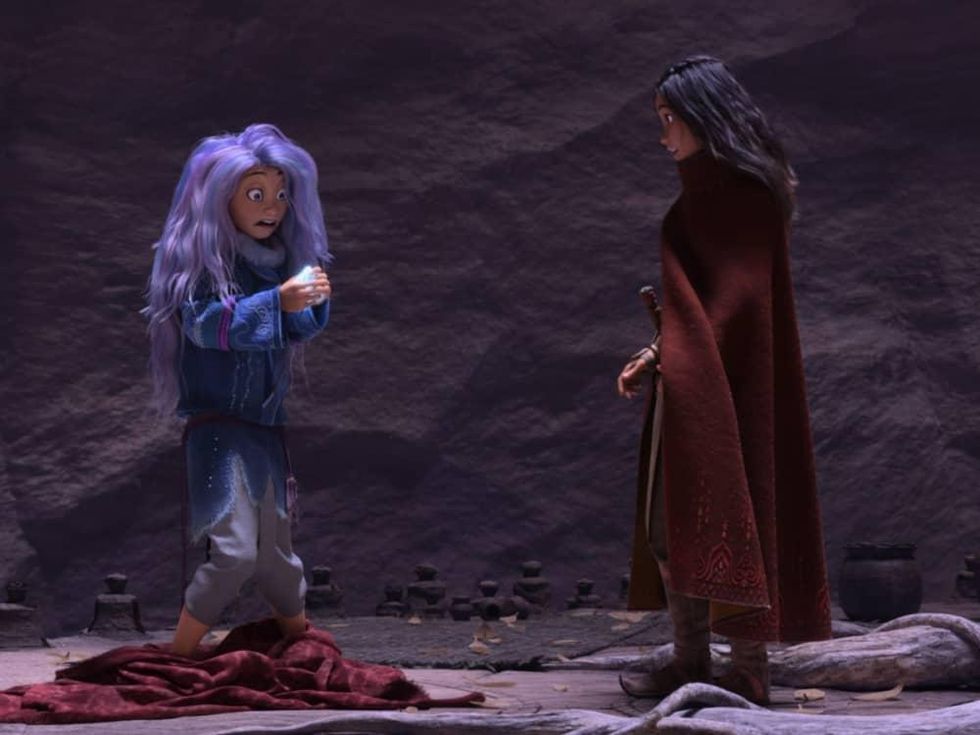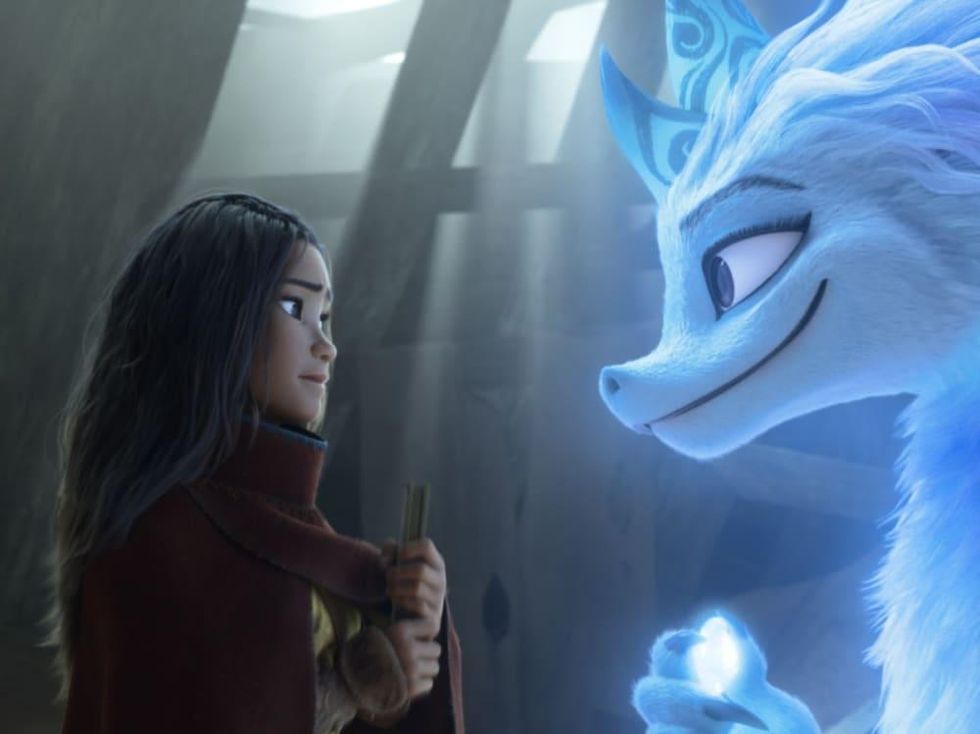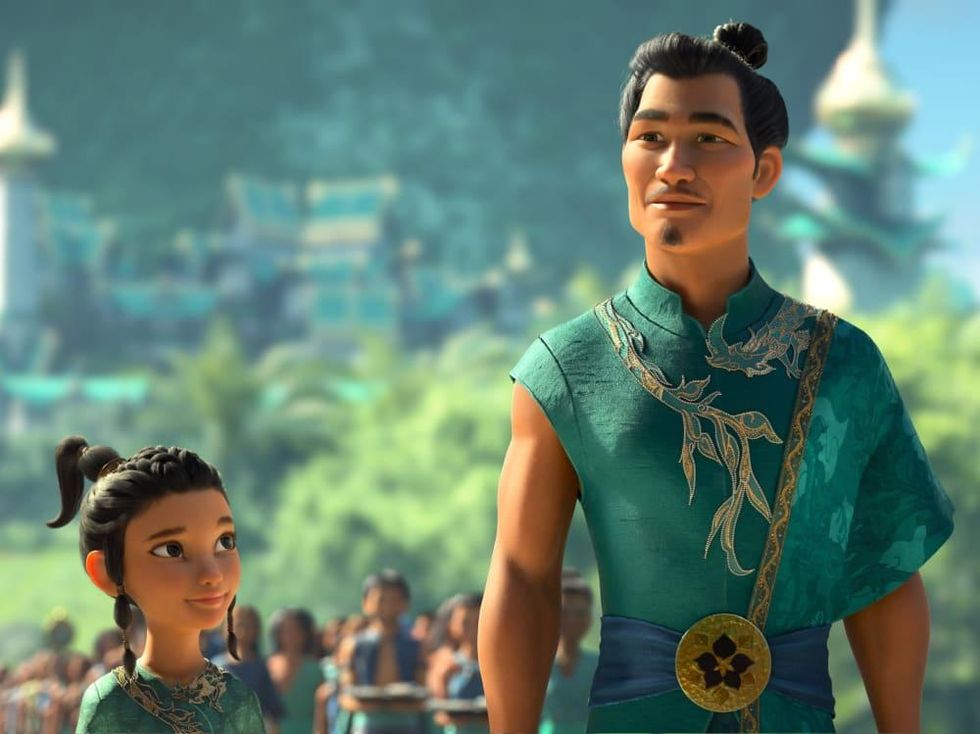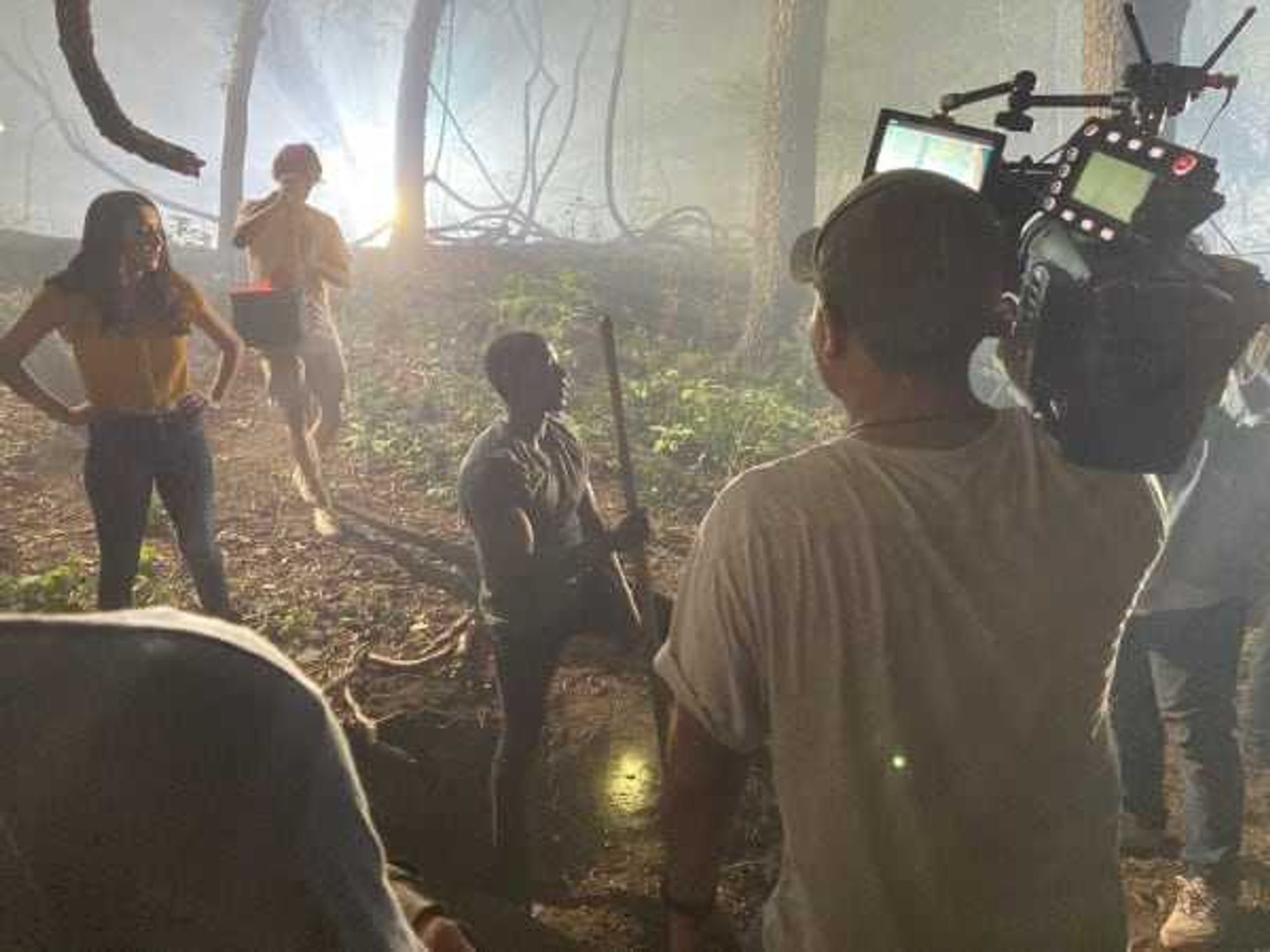Movie Review
Raya and the Last Dragon is classic Disney with an Asian twist
In the past 10 years or so, Walt Disney Studios has been trying to rectify a big blind spot in its history by putting people of color as leads in their animated films. They include 2009’s The Princess and the Frog, 2014’s Big Hero 6, 2016’s Moana, 2017’s Coco, and 2020’s Soul, a list that admittedly is still dwarfed by films featuring white lead characters. Raya and the Last Dragon can now be added to that list, although it still raises some interesting questions about inclusion.
Instead of an actual Asian country, the film is set in the fictional country of Kumandra — at least, that’s what it was called before divisions split it into five lands named after parts of the dragon-shaped lake it surrounds: Fang, Heart, Spine, Talon, and Tail. Raya (Kelly Marie Tran) is the daughter of Benja (Daniel Dae Kim), the leader of Heart, which controls the Dragon Gem, the last remaining remnant of when dragons protected the country from an evil force known as the Druun.
Without getting too into the weeds of the complicated plot, human nature and jealousy destroy the tenuous peace the five lands had, forcing Raya to go on a years-long journey to restore that harmony. Along the way she’s joined by a ragtag group from the other lands, as well as the titular last dragon, Sisu (Awkwafina), each of whom has something unique to offer to the mission.
One of the first notable things about the film is that its vaguely Asian setting allows the filmmakers to play around with casting. Tran is the daughter of Vietnamese immigrants, Awkwafina is of Chinese and Korean descent, Kim is from South Korea, and other significant characters are played by Gemma Chan (Chinese descent), Benedict Wong (Chinese descent), and Sandra Oh (Korean descent). This mixture of actors goes along with the setting of the film, which press materials say was “inspired by Southeast Asian cultures and geography.”
The film is also written by Qui Nguyen (Vietnamese descent) and Adele Lim (Malaysian), although six other people, including co-directors Don Hall and Carlos López Estrada, are credited with the story. Having a story that multiple Asian cultures can call their own is wonderful, opening up the characters to be accepted by anybody. However, it will be up to the individual viewer as to whether the homage to different cultures is as worthy a tribute to the region as making a film that’s actually set in one of the represented countries.
If you take cultural politics out of the equation, which most people will do since it’s a Disney film aimed at children, the film is as effective an adventure as any recent animated film. The story arc mostly follows the same trajectory that many other Disney films have, but there’s a reason the formula has remained successful for so long. The little details they add along the way — including a con baby with monkey henchmen, gestures of respect that take on real meaning, and more — make the film feel almost seamless.
Tran, previously best known for playing Rose in the last two Star Wars films, is an inspired choice for Raya, and her voice fits the character extremely well. Awkwafina’s raspy voice is so unique that it’s no wonder she’s already had plenty of voiceover work, and this part feels predestined for her. The rest of the cast does well, although none of them stands out like the first two.
Raya and the Last Dragon has the type of story to make it fit right in with other Disney classics, but it will be interesting to see what the reception is from members of the Asian community at large. There appears to be nothing but positive intent, but in modern-day society, how something is intended and how it’s received can be miles apart.
---
Raya and the Last Dragon will debut in theaters and on Disney+ with Premier Access on March 5.




